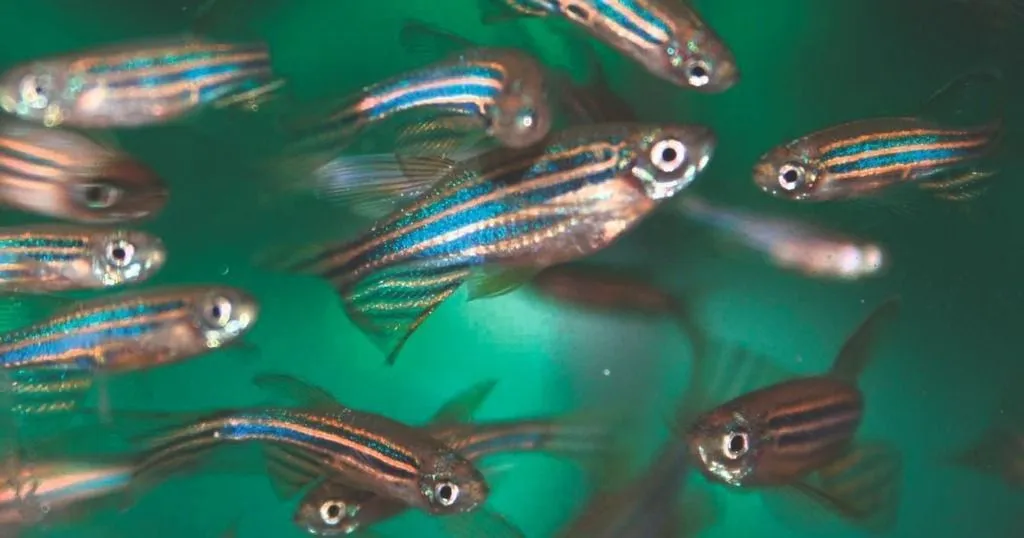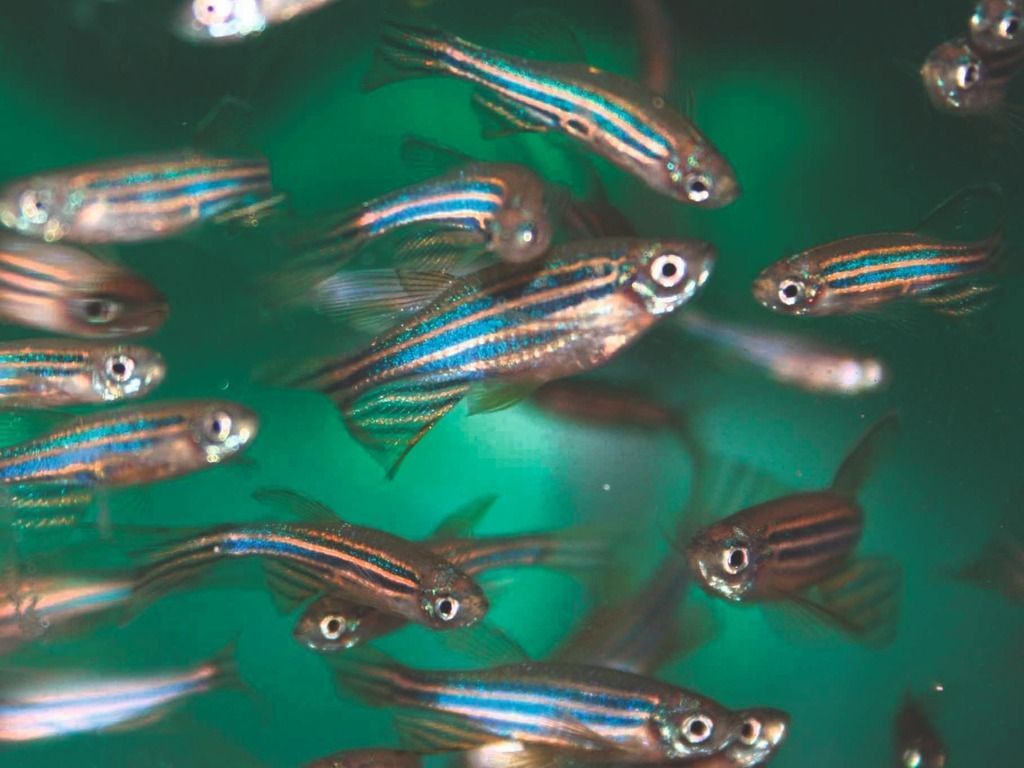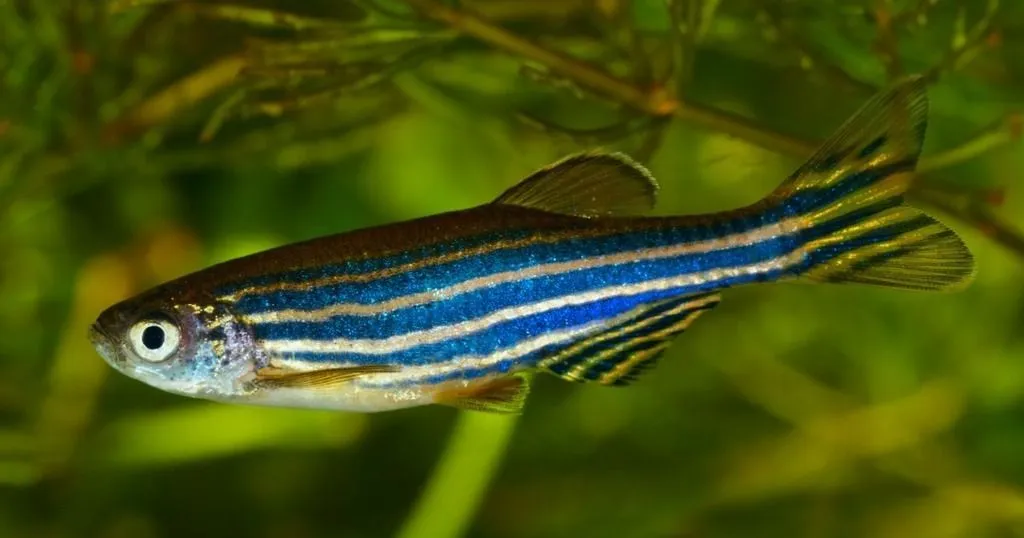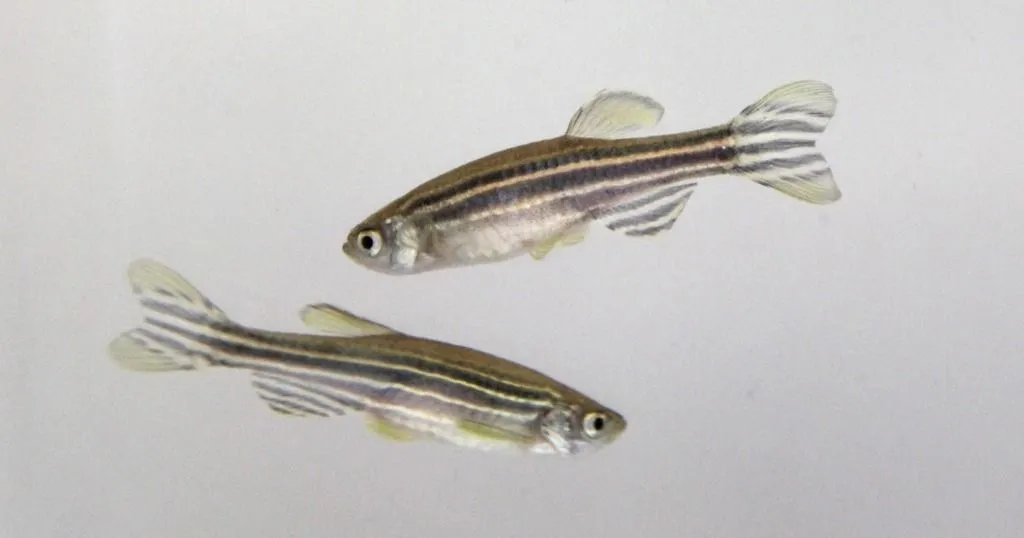Sex preference and other social aspects of zebrafish behavior
Social behavior is a well-known topic of neuroscience research, since it is so often affected in psychiatric disorders. Think of obvious examples such as schizophrenia and autism.
Posted by
Published on
Thu 19 Jul. 2012
Topics
| Danio Rerio | EthoVision XT | Social Behavior Research | Zebrafish |

Image courtesy: Prof. Gerlai, University of Toronto Missisauga
Social behavior is a well-known topic of neuroscience research, since it is so often affected in psychiatric disorders. Think of obvious examples such as schizophrenia and autism. Social dysfunction can have a severe impact on daily functioning, therefore many studies in search of genetic disposition or drug targets include social behavior paradigms.
Social behavior is complex and multi-faceted. But actually, in studies using animal models, most social interaction is measured in a very straight-forward way; by proximity. Zebrafish have a strong, natural tendency to form shoals, and this tendency and the density of these groups is influenced by several factors, from genetics to pharmacological manipulation. How close they swim together or if one fish approaches the other are practical measures to investigate social behavior in zebrafish.
The influence of food and predation on shoaling
When competition for food increases, the distance between fish does too. Miller and Gerlai [5] showed this in an experiment where they scattered food in a tank with 16 zebrafish and found that the distance between the fish doubled. This same study also used a hawk model to simulate a predator attack. Zebrafish initially scattered out, increasing the distances between them, followed by fast regrouping into an even tighter shoal than before.
Appearances and social behavior
Zebrafish care what their group mates look like. The effects of phenotype or gender on social interest have been heavily studied. Engeszer et al. [1] studied wild-type zebrafish and a variant without stripes, and reared them in isolation, with their own phenotype or cross-reared with the other phenotype. It turns out that rearing treatment was the determining factor, not genetics; when given the choice between striped and non-striped fish in a social preference test, they choose to side with the appearances they were used to during rearing. The isolates didn’t show a preference at all.
What if they have not been biased with how they grew up? Saverino and Gerlai [7] did an interesting study using a video screen to project manipulated images of zebrafish, investigating the influence of color, size, and patterning of the fellow zebrafish. Red zebrafish are not aversive, but not preferred either, while yellow colored ones are. A stretched image of a zebrafish was avoided, while a compressed picture did not make a difference. Stripe-less or vertically striped zebrafish also did not get significantly less or more attention.
Do males like females? Yes, Ruhl et al. [6] found that males prefer a shoal of females over a shoal of males. Do females like males too? No: in the same study, females didn’t show a preference.
Size does matter
Onto the next question - do zebrafish like a crowd? Ruhl et al. [6] investigated the effect of shoal size on social behavior, and found that females prefer larger shoals, while males show no preference in a social preference test. Green et al. [2] describe the effect of shoal size on shoal density and report that 2 fish stayed significantly closer together that fish in groups containing 3, 4, 5, 6, 7, or 8 fish.
Social behavior and pharmacology
Now that we understand the basics of zebrafish social behavior, we can investigate the influence of genetics (modeling disorders) and pharmaceuticals on social behavior. There are many interesting avenues for researchers to explore. Several pharmaceuticals have proven to increase sociability. Some examples includes mescaline [4], sulpiride and haloperidol (both reversing the effect of proline in a zebrafish model of hyperprolinemia [8]). Others prove to decrease sociability: LSD [3], or have no affect: PCP [4].

Automatic tracking of groups
So now we know a couple of things. 1) Social behavior is an interesting topic of research because it is so often affected in psychiatric disorders. 2) Zebrafish make for an interesting model in these studies because they show social behavior. 3) Social behavior is readily influenced by genetics, chemicals, and other environmental factors.

The good news is that this research, mostly taking place in the form of social preference tests or shoaling (inter-fish distances) tests, is easily and reliably automated. Tracking software follows fish and measures location, proximity, inter-fish distances, velocity, durations, and many more parameters automatically. Green et al. [2] illustrates this great potential of automatic video tracking software and its use in social behavior studies in zebrafish. They tracked individuals in a group of unmarked zebrafish.
FREE TRIAL: Try EthoVision XT yourself!
Request a free trial and find out what EthoVision XT can do for your zebrafish research!
- Track zebrafish adult, larvae or embryo
- Suitable for tracking in any arena
- Most cited video tracking system
You can read more about zebrafish social behavior applications here.
Also check out other zebrafish-related blogs.
References
- Engeszer, R.E.; Ryan, M.J.; Parichy, D.M. (2004). Learned social preference in zebrafish. Current Biology, 14, 881-884.
- Green, J.; Collins, C.; Davis, A.; Kyzar, E.; Pham, M; El-Ounsi, M.; Roth, A.; Gaikwad, S.; Lansdman, S.; Cachat, J.; Grieco, F.; Tegelenbosch, R.; Noldus, L.; Kalueff, A.V. (2012). Towards automated high-throughput neurophenotyping of zebrafish social (shoaling) behavior. Society for Neuroscience SfN-2012 Abstract book, New Orleans, USA.
- Grossman, L.; Utterback, E.; Stewart, A.; Gaikwad, S.; Chung, K.M.; Suciu, C.; Wong, K.; Elegante, M.; Elkhayat, S.; Tan, J.; Gilder, T.; Wu, N.; DiLeo, J.; Kalueff, A.V. (2010). Characterization of behavioral and endocrine effects of LSD on zebrafish. Behavioural Brain Research, 214, 277-284.
- Kyzar, E.J.; Collins, C.; Gaikwad, S.; Green, J.; Roth, A.; Monnig, L.; El-Ounsi, M.; Davis, A.; Freeman, A.; Capezio, N.; Steward, A.M.; Kalueff, A.V. (2012) Effects of hallucinogenic agents mescaline and phencyclidine on zebrafish behavior and physiology. Progress in Neuro-Psychopharmacology & Biological Psychiatry, 37(1), 194-202.
- Miller, N.; Gerlai, R. (2007). Quantification of shoaling behaviour in zebrafish (Danio rerio). Behavioural Brain Research, 184, 157-166.
- Ruhl, N.; McRobert, S.P. (2005). The effect of sex and shoal size on shoaling behaviour in Danio rerio. Journal of Fish Biology, 67, 1318-1326.
- Saverino, C.; Gerlai, R. (2008). The social zebrafish: Behavioral responses to conspecific, heterospecific, and computer animated fish. Behavioural Brain Research, 191(1), 77-87.
- Savio, L.E.B.; Vuaden, F.C.; Piato, A.L.; Bonan, C.D.; Wyse, A.T.S. (2012). Behavioral changes induced by long-term proline exposure are reversed by antipsychotics in zebrafish. Progress in Neuro-Psychopharmacology & Biological Psychiatry, 36, 258-263.
Related Posts

Zebrafish research: growing demands in South America

Zebrafish and withdrawal
